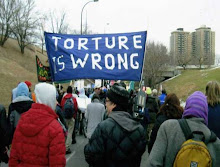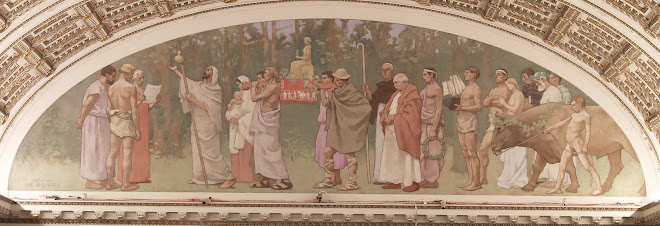Prospects, Possibilities, Proposals
Marshall Ganz
(11/20/08)
“I will ask for your service and your active citizenship when I am President of the United States. This will not be a call issued in one speech or one program—this will be a central cause of my presidency.”
Barack Obama, Colorado Springs, July 2, 2008.
“Delaware County, Pennsylvania, volunteers have a fierce case of, ‘Well, we're all fired up now, and twiddling our thumbs!’ I suspect it can't only be happening here, but all over the country. Here, ALL the leader volunteers are getting bombarded by calls from volunteers essentially asking, ‘Nowwhatnowwhatnowwhat?’
Marilee Taussig, Delaware County, Pennsylvania, November 17, 2008.
The campaign to elect Barack Obama as President launched a movement. Across the country, some 3.5 million citizens contributed to this historic effort. Rooted in the motto of “respect, empower, include,” the campaign recruited, trained and deployed some 3000 community organizers who structured, trained, and coached thousands of local leadership teams. Those teams, in turn, worked together to mobilize individuals in each community to take part in the campaign in record numbers. They became the foundation of a renewed civic infrastructure urgently needed to deal with the critical challenges of our time.
Now, the question is, can it flourish? Or, as one Wisconsin team leader put it, the question is whether “the Obama administration understands the true power of the network they have created.”
It is time to consider the shape such a movement could take, how government could encourage it, and how the interaction of government and movement could strengthen our democracy. Such clarity is needed if we are to address our most critical public challenges: from climate change, to economic renewal, to education and health care.
Historically, social movements were launched outside the electoral process, rooted in communities, workplaces, or churches. They only later reshaped party politics and public policy. The civil rights movement, for example, began to organize in the South in the 1950s, reshaped both parties in the 1960s, and, as a result won major policy reform.
The Obama campaign became a social movement within a political campaign. It went beyond generating lists of donors and potential donors. It trained full-time organizers who were mostly in their 20s; organized thousands of local leadership teams (1,100 in Ohio alone); and engaged at least 1.5 million volunteers. Because this campaign built its own organization at the local level - rather than relying on the usual pastiche of interest groups, party organizations, and 527s – it can be a major new force in responding to today’s most pressing challenges and help usher in reform unmatched since the 1930s.
But as President-elect Obama and his advisors tackle the urgent task of re-peopling the Federal government, some important questions must be addressed.
Can a sitting President govern the country and lead a movement at the same time? Not only is Obama required to provide leadership to the entire country, he must bring the best leadership he can into government. That means President Obama may provide the movement with moral and political leadership but not its organizational leadership. Who can? And how would it work?
Trying to “turn it over” to the Democratic Party will not work. One can turn over lists, but not people, much less a movement.
Some people, especially political operatives, seem focused on transforming the Obama movement into a Web-based network: funds could be raised, information shared, emails called for, etc. As a kind of Presidential “MoveOn,” such a network could mobilize support when needed, albeit thinly. But this would omit the “community organizing” that infused the campaign with the grassroots leadership that gave it its strength.
More promising – and challenging – would be an effort to turn Obama for America into a new organization, perhaps a 527 or 501(c)(4). Such a “Campaign for a New America” would create a representative governing body and invite organizers, leaders, and volunteers to work through it as a major venue for “active citizenship” at all government levels. One strength of the Obama campaign was a focus on shared values that freed volunteers from rigid “issue silos” of progressive politics and facilitating participation within a far more diverse constituency. In the tradition of American social movements, it linked local action to national purpose, investing local effort with national impact, and anchoring national goals in local reality. This new organization could link the pursuit of national, state and local policy goals, facilitate local community action, and offer the training, coordination, and communication which the campaign did so well. And it could serve as a wellspring of support for candidates for local, state and national public office.
The work of volunteers in the Obama campaign demonstrated an appetite for active citizenship that many thought dead, especially in young people. The excitement, however, is not about the social service voluntarism extolled by the first President Bush as “a thousand points of light.” The excitement is about empowerment, working with others to organize, advocate, and practice politics.
This is what “active citizenship” means. It involves delegating responsibility and inviting citizens to join in the work of strategizing, mobilizing, and enacting public policy at state and local levels.
This approach to governance is not unfamiliar. During the Civil War, for example, the Federal Government created the U.S. Sanitary Commission as a structure through which women organized themselves – and their communities – to address medical needs of soldiers and, later, veterans. It evolved into the Red Cross. During World Wars and Depression government created similar structures through which citizens could actively engage in the collaborative work needed to address these challenges. In these cases, citizens were called upon to organize not because it was a “nice thing”, but because without citizen engagement these crises could not be addressed.
The crises we now face can also be addressed with the depth, breadth and ambition with which we faced these earlier crises. Dealing with these challenges will require citizen engagement in every neighborhood, town, city, county and state. It will call for an unprecedented degree of commitment by individuals, families, communities, and all manner of public and private institutions. In other words, dealing the challenges we now face may offer the opportunity to reengage ourselves in the work of self-government.
For this to work, however, and for the full range of our citizenry to participate, government will not only have to create the structure, but provide training, tools, and leadership. In the past, such opportunities for civic leadership development have either been taken advantage of mainly by the privileged – drawing on experience, practices, and resources already available to them – or they have been narrowly focused on the needs of “underserved populations.” For many years, however, while many institutions focused on social service provision, our civic leadership skills have atrophied. The Obama campaign demonstrated that the need, appetite, and value of civic leadership training – or organizing – cuts across class, race, and region.
The major investment by the Obama campaign in the development of civic capital – infrastructure of leadership, teams, and organizers – has already changed us, creating new capacity, opportunity, and possibility. Citizen efforts to support the Obama program have already begun to spring up around the country. And, of course, its organizers have become the object of major recruiting efforts by community organizations, the labor movement, the climate change people, and citizen groups of every ilk. The major “recruiting effort,” however, could – and ought to be – in service to the nation itself.
Marshall Ganz, a veteran community organizer, is now a Lecturer in Public Policy at the Kennedy School of Government where he teaches courses in organizing, public narrative and moral leadership. He advised the Obama campaign on organizing strategy, leadership development, and training.





























































































































No comments:
Post a Comment